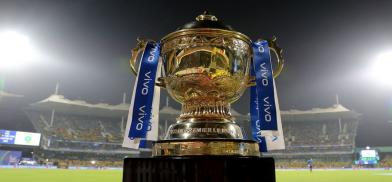IPL in the times of COVID- 19: The not so visible visibilities
Here we are then, the IPL has got firmly embedded in our collective and individual consciousness. Daily routines are configured now to cater for the timings. Time to get updated on some lesser-known aspects

Here we are then, the IPL has got firmly embedded in our collective and individual consciousness. Daily routines are configured now to cater for the timings. Time to get updated on some lesser-known aspects.
The foreign hand
In the IPL, there is a provision for up to four overseas players to play for each team. Accordingly, each team chooses the best batsmen and bowlers available and is not coy about paying the hefty amounts required. It’s an open market and hence, some players could represent more than one team in the course of the IPL journey.
For instance, Aaron Finch, the Australian skipper is the ultimate vagabond of IPL and on donning the Royal Challengers Bangalore (RCB) jersey this season, he cracks eight (8). The batsman who holds the world record for the highest individual T20 score has not found a permanent home in the IPL!
It’s no wonder then, that those with the most recorded sixes in the IPL history are West Indies batsman Chris Gayle (326) and South African cricketer AB de Villiers (219). The most wickets by any bowler is also an overseas player-Sri Lankan Lasith Malinga. With the best economy figures in IPL, there are four overseas bowlers in the top 6. It’s a great value for money.
Opportunity for cricketers from South Asia
Apart from the statistics, what this does is give the rising Indian cricketers and those from Nepal, Afghanistan, and Bangladesh selected by franchises, an insight into the cricketing norms, practices, methodologies, and freedom to mingle with world-renowned cricketers and learn from them.
It’s a wonderful opportunity to take the field with famous names and to share the dressing room with them, apart from spending free time picking their cricketing brains. Helps them to understand and experience the nuances of the game. All in all, IPL cricket and the fans are the real winners.
And there were first-class cricketers who, despite abilities and potential, had to buy tickets to come within 90 yards of such gods. Wish my parents had delayed things.
COVID economics
Due to the realities of holding the IPL during these adverse times, there have been a number of changes in the way IPL has been conducted. No jam-packed stands with raucous crowds and tamasha all around, viewing is from homes, applause and cheering are from loudspeakers (sometimes out of sync with the activity being applauded), with the cheerleaders prancing only on the big screen and more. There is a pervading sense of unreality.
Wouldn’t you like to know what the economics are under these conditions?
Well, to keep it short, the main impact is felt in the following:
*No opening ceremony, hence saving of approximately Rs 20 crore (200 million).
*The winner’s prize reduced by 50 percent.
*Overall sponsorship revenue down by 10-15 percent for franchises and approximately Rs. 25 crore (250 million) loss due to no gate revenues.
*Logistics, to include biosecurity and travel and boarding for overseas players, to cost franchises a bomb.
*The major loss this year is from ticket sales, which is in the region of Rs. 400 crore (4 billion)! The overall estimated value erosion is around 5-10 percent this year.
A snapshot on viewership; 2020/2019:
Total viewing (First Week): 60.6 million/ 52.8 million
Total viewers per match: 269million/258 million
Brands Advertised: 143/117
Advertising Volumes: 15 percent growth (Star Network)
At the end of it all, once calculators are put away, the franchises hope to make a profit of approximately Rs. 270 crore (2.7 billion) each. Not what a franchise would have wanted, but enough for them to go laughing to the bank.
I often wonder if those playing First Class Cricket then were born in the wrong times. The members of the Indian Cricket Team which won the 1983 World Cup, were paid Rs. 200 per day for three days and Rs. 1500 as match fees. A total of Rs. 2100. Bishan Singh Bedi as manager got the same amount. And then, there is IPL.
Sledging
Cricket might be called a 'gentleman's game' but there have been times when things went the other way. Earlier, we had formidable bowlers and batsmen who didn’t need to sledge. With regards to the IPL, am not sure if anyone has the time or inclination to sledge. In fact, I cannot visualise a young and upcoming bowler, trying to make a name, sledging Chris Gayle or de Villiers or Indian cricket team captain Virat Kohli. Hope you get the drift? Apart from all this, there are points for ‘fair play’ and no team wants negative marking. Lastly, technology has so thoroughly invaded the ground that stumps are hard-wired to pick up even snicks. No one now would want choice vernacular sentences or phrases hitting the airwaves.
However, a bit of on-field banter livens up proceedings. Sledging makes cricket more interesting for the fans and fosters a creative streak amongst the players.
For instance:
*Sachin Tendulkar Vs Abdul Qadir. The year was 1989. The 16-year-old had recently made his debut in Pakistan and was facing among the best bowlers in the business. The Pakistani crowds mocked Sachin, holding up placards saying "Dudh Pita Bhachcha...ghar jaake dhoodh pee," (Hey kid, go home and drink milk). Sachin sent the then young leg spinner Mushtaq Ahmed hiding for cover. (Hit two sixes in one over)
*Mushtaq Ahmed’s mentor, the legendary Abdul Qadir, challenges Sachin saying "Bachchon ko kyon mar rahe ho? Hamein bhi maar dikhao" (Why are you hitting kids? Try and hit me).
In the next over the figures read 6, 0, 4, 6, 6, 6.
The IPL party is well underway and initial hiccups are being resolved and dealt with. What is missing is the hic, hic afterward.
To quote American comedian and actor Groucho Marx: “I watched a cricket match for three hours waiting for it to start.” IPL has fine-tuned that to finish the match at the same time. Viva le difference!
(The writer played domestic Ranji Trophy cricket in India from 1974-84 and was the first Indian to capture all 10 wickets in an innings in a first-class match that is recorded in Wisden's Almanac at Lords, England. The views expressed are personal. He can be contacted at iraviravi@gmail.com)









Post a Comment